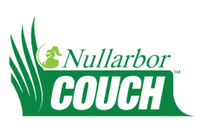When it comes to choosing the right turf for your lawn, soft leaf buffalo grass is a top contender. Known for its lush green appearance and low-maintenance requirements, this variety of grass has become increasingly popular among Australian homeowners.
The resilience of soft leaf buffalo grass makes it an excellent choice for both sun-drenched and shaded areas. Its ability to withstand harsh weather conditions while maintaining its vibrant colour sets it apart from other types of lawn.
Varieties like Kikuyu or Couch which accumulate excessive thatch leading to sponginess over time, Buffalo Grass remains healthy-looking due to its lower tendency towards thatch build-up.
In the following sections we’ll delve into everything you need to know about maintaining your soft leaf buffalo.
THE LOW MAINTENANCE ADVANTAGE OF BUFFALO GRASS
For homeowners seeking a hassle-free turf solution, soft leaf buffalo grass is the top contender.
Its low-maintenance nature sets it apart from other lawn varieties.
This robust variety boasts resistance to most pests and diseases that typically plague lawns. Its deeply rooted system aids in warding off common garden invaders such as broadleaf weeds – an attribute that resonates well with those who prefer enjoying their yards over maintaining them.
Apart from its resilience against pests, what makes this buffalo grass strong is how effectively it adapts under different conditions. Whether it’s harsh weather or poor soil quality, you can count on your soft leaf buffalo lawn to withstand these challenges – making it suitable for most locations across Australia.
UNDERSTANDING THATCH IN BUFFALO GRASS
Differentiating itself further among turf varieties available at the Grech’s Turf online lawn store, the humble buffalo grass has another unique trait up its sleeve, lower levels of thatch accumulation compared to others like Kikuyu and Couch.
‘Thatch’ refers to dead organic matter, which often leads to issues including moisture retention problems and increased susceptibility towards fungal diseases.
Soft Leaf Buffalo Variety: Sir Walter Buffalo Turf: A popular choice for Australian homes because of its lush green appearance throughout all seasons.
MOWING GUIDELINES FOR SOFT LEAF BUFFALO GRASS
Keeping a soft leaf buffalo lawn in top shape requires a little knowledge about the right mowing practices. Unlike other turf varieties, soft leaf buffalo grass has specific needs when it comes to cutting heights and frequencies, particularly according to seasonal changes.
The ideal height for trimming your soft leaf buffalo grass lies between 25mm – 50mm. This range not only gives your lawn an appealing look but also helps maintain the strength of its broad leaf blades.
Note: When mowing only ever take off one third of the leaf at a time.
For areas with limited sunlight or shade, consider increasing this height up to around 50mm – 70mm encourages growth and promotes overall health. Mowing your lawn during the hotter months when the grass grows faster, it’s important to mow frequently without cutting it too short.
During cooler months, something interesting happens. Photosynthesis, the process plants use to convert light into energy, slows down significantly. The temperature drops below what’s ideal for this energy conversion process, and as a result, plants conserve their resources by reducing the frequency of this process.
Why? Because they want to save up all that energy for a magnificent resurgence when springtime rolls back around. Nature’s way of working its magic!
Neale’s Tip: For a top-notch soft leaf buffalo lawn, remember these tips: mow to 25mm – 50mm height for strength and appeal; increase this in shady spots. It’s low-thatch grass so less prone to fungal diseases. Adjust your mowing frequency with the seasons and avoid over-mowing or you’ll risk stressing your turf.
WATERING PRACTICES FOR NEW AND ESTABLISHED BUFFALO LAWNS
The health of your soft leaf buffalo grass, whether newly installed or well-established, is heavily influenced by the watering practices you adopt. Ensuring proper hydration can make a world of difference in how your lawn thrives.
New turf needs immediate attention post-installation. The rule here is to do a deep water within 30 minutes after laying down the turf. This guarantees that both blades and soil are thoroughly drenched – a crucial step towards establishing strong roots early on. In those initial two weeks following installation, it’s important to keep the topsoil consistently moist.
WATERING: ENCOURAGING DEEP ROOTS
When it comes to caring for established lawns, remember that once your turf is established a deep watering once a week will encourage a deep root system. In the hotter weather take notice of the leaves as they will shrink, and extra water will be needed.
This approach encourages deeper root growth as it entices roots to grow downwards in search of moisture, rather than spreading horizontally near the surface where they’re prone to drying out in hot weather. This is especially important here in Sydney, where we often face such conditions. So, let’s keep those roots happy and hydrated!
An easy way to gauge if your lawn needs water?
Check how easily a screwdriver penetrates the soil – no resistance means there’s enough moisture, otherwise give it some more H20.
YOUR BUFFALO GRASS LAWN’S IDEAL WATERING SCHEDULE
Established lawns generally require less frequent watering compared with freshly laid ones. When temperatures soar above 30 degrees Celsius during our Aussie summers, giving twice weekly deep soaks should suffice while reducing frequency once cooler autumnal temps kick-in.
Bear in mind though these recommendations may vary depending upon local climate conditions so always check with experts from Grech’s Turf who specialise in all turf types including Sir Walter Buffalo turf.
Neale’s Tip: Keep your soft leaf buffalo grass lush by adopting proper watering practices. New turfs need immediate hydration and consistent moisture for the first two weeks, while established lawns benefit from a deep watering to encourage deep root growth. Adjust your watering schedule with changing seasons and local climate conditions.
FERTILSING YOUR BUFFALO GRASS LAWN
One of the most important aspects of maintaining a healthy buffalo grass lawn is fertilisation. It’s crucial to use slow-release fertilisers that provide your soft leaf buffalo grass with all the nutrients it needs for optimal growth.
The key time to start this process is around a month after installation. This helps establish deeply rooted buffalo lawns and encourages strong growth in your new turf varieties. Always remember to water thoroughly following each application so those valuable nutrients can effectively penetrate the soil beneath.
THE ROLE OF SLOW-RELEASE FERTILISERS
Slow-release fertilisers are particularly beneficial for buffalo lawns as they deliver a steady supply of essential macro-nutrients over an extended period without risking nutrient burn or excessive leaching. They release their nutritional content gradually, allowing your soft leaf buffalo turf sufficient time to absorb them at its own pace and get nourishment when required.
A quality product will contain nitrogen (N), phosphorus (P), and potassium (K). Nitrogen promotes lush green colour, while phosphorus aids root development, potassium enhances resistance against diseases affecting our beloved broad leaf blades variety known as ‘Buffalo’.
CARING FOR ESTABLISHED LAWNS
Maintaining a healthy and vibrant lawn is key, whether you’ve got an established lawn or you have recently laid a new lawn. Here’s a tip: for optimal results, try feeding your lawn at the beginning of every season.
Make sure to use a balanced slow-release fertiliser that’s specially designed for warm season grasses like Soft Leaf Buffalo Grass.
MINDFUL SUMMER FEEDING
- Avoid Over-Fertilisation: Proper feeding is crucial for turf health, but avoid overfeeding, especially during summer heatwaves. Too much nitrogen causes rapid blade growth, depleting energy and increasing drought stress.
Neale’s Tip: Keep your buffalo grass lawn in top shape by using slow-release fertilisers, starting right after installation, and continuing at the beginning of every season.
For established lawns, aim for feeds at the beginning of every season with a special warm season grass formula. Watch out for signs of stress or discolouration and avoid over-fertilising to prevent damage.
DEALING WITH PESTS, WEEDS, AND DISEASES IN YOUR BUFFALO LAWN
The resilience of soft leaf buffalo grass is something to admire. However, even the most robust lawn can face challenges from pests like Armyworms or African Black Beetle larvae that love munching on your turf’s roots.
When it comes to dealing with these unwelcome guests in your green paradise, you might want to consider pesticides specifically designed for lawns. You’ll find a range at pest and weed products in our online lawn store. Just remember to follow those label instructions closely.
CONTROLLING BROWN PATCH DISEASE IN WARM CONDITIONS
Brown Patch disease isn’t something any homeowner wants to see affecting their buffalo grass. This fungus thrives in warm, wet conditions and causes circular brown patches across an otherwise perfect lawn.
Avoid watering during evenings when humidity levels are high, as this creates ideal conditions for fungi growth. Regularly removing excess thatch also helps keep spores under control – another advantage of our low-thatch variety of buffalo grass.
If symptoms persist despite all precautions, fungicides could be considered. Always follow the manufacturer’s directions regarding application rates and timings.
WEED MANAGEMENT STRATEGIES
Our Sir Walter Buffalo Turf faces tough competition from weeds fighting for resources. While hand eradication can be effective for smaller weed populations, herbicidal treatments may be necessary for more widespread infestations. Let’s stay on top of weed control to keep your turf in top shape!
When it comes to choosing weed killers, be sure to opt for products with Bromoxyl or MCPA. These ingredients have been proven safe for broad-leaf blades, making them a reliable choice for your lawn care.
On the other hand, steer clear of formulations containing Dicamba. This particular ingredient can be harmful to sensitive plant species, including those popular ornamental shrubs often seen in residential gardens. Remember, it’s important to pay close attention and select the right weed killers to avoid any unintended damage.
Neale’s Tip: Keep your buffalo grass in top nick by managing pests with specific lawn pesticides, controlling Brown Patch disease through careful watering and thatch removal, and tackling weeds either manually or using safe herbicides.
Don’t forget, always follow product instructions to a T.
CULTIVATING DEEP ROOTS WITH PROPER WATERING TECHNIQUES
Buffalo grass, particularly the soft leaf buffalo variety, is renowned for its deep-rooted nature. This characteristic allows it to endure dry conditions and resist weed invasion effectively.
The key lies in your watering techniques, you should aim not only to moisten the surface but also saturate deeper into the soil where roots develop.
WATERING NEW BUFFALO LAWNS
Newly installed buffalo lawns need immediate attention after installation. It’s essential that these new turfs receive sufficient water within 30 minutes of being laid down on your new turf underlay.
This initial deep saturation ensures both the turf layer and underlying soil are adequately moistened, encouraging root growth downwards into the soil rather than sideways along the surface. After this initial soaking, continue daily watering for at least two weeks until your new soft leaf buffalo lawn establishes itself firmly in its location and cannot be lifted.
MAINTAINING ESTABLISHED BUFFALO GRASS LAWNS
An established buffalo lawn doesn’t require as frequent watering as newly planted ones, however, when you do irrigate, aim for less frequency but more depth. By doing so, you encourage deeper rooting, which makes your lawn resilient during dry periods and reduces reliance on regular irrigation.
FAQs – SOFT LEAF BUFFALO GRASS
What is the softest buffalo grass?
Sir Walter DNA Certified Buffalo Grass is renowned for its soft texture, making it a comfortable choice for home lawns and play areas.
What is soft leaf buffalo grass?
Soft leaf buffalo grass refers to varieties of Stenotaphrum secundatum that have softer leaves compared to traditional types. These include popular strains like Sir Walter and Palmetto.
How do you fix a spongy buffalo lawn?
To rectify a spongy buffalo lawn, remove excess thatch through vertimowing or dethatching. Regular mowing at correct heights also helps control thatch build-up.
Is Sir Walter Buffalo soft leaf?
Absolutely. Sir Walter Buffalo is indeed a variety of soft-leafed buffalo grass known for its plush feel and robust performance in various Australian climates.
Neale’s Wrap
Buffalo grass has emerged as a low-maintenance, disease-resistant choice for homeowners. Its unique characteristics make it less prone to thatch build-up compared to other lawn varieties like Kikuyu and Couch.
Mowing at the right height and frequency is key to maintaining its health in different conditions. New Buffalo lawns need immediate watering post-installation while established lawns benefit from a deep weekly watering.
Fertilising practices vary depending on whether your buffalo lawn is new or well-established, with specific times of the year being more beneficial than others. Pests can still pose a problem but are manageable through effective strategies including hand eradication and safe herbicides.
In conclusion, soft leaf buffalo grass offers an excellent option for those seeking a robust yet easy-to-care-for turf solution.
At Grech’s Turf Supplies, we’re dedicated to providing top-quality cultivated turf and sporting grass surfaces since 1975.
If you’re ready to transform your yard with our premier range of soft leaf buffalo grass or any other variety suited for your needs, visit us today at Grech’s Turf.
Your dream green space awaits!











